Xenoestrogens are everywhere these days. What do these common skincare ingredients mean for your health, and what can you do avoid them?
When it comes to safer skincare, the options can be endless and the product labels misleading. Many women avoid making the switch in this area for this very reason.
Did you know conventional chemical-laden skincare products may actually be behind your stubborn hormonal acne. Or even a contributor to your recent diagnosis of PCOS.
The most common culprit behind these toxic effects of conventional skincare products? Xenoestrogens.
Xenoestrogens come in many forms today. From the plastic in your water bottle, to the pesticides sprayed on your lawn, to the ingredients in your personal care items.
These toxic hormone-disrupting chemicals are everywhere. And unfortunately, it’s nearly impossible to avoid all forms of these compounds if you live any sort of modern life.
Yet by being aware of the presence of xenoestrogens in our skincare products, we can take measures to significantly reduce our exposure and improve our health in the long run.
Keep reading if you want to learn:
- What are xenoestrogens and why we should care about them
- Who should be most careful to avoid these chemicals
- What skincare ingredients we should look out for
- How to switch to safer skincare options
What are Xenoestrogens?
Xenoestrogens are a group of endocrine-disrupting chemicals that mimic our body’s natural hormone, estrogen.
Exposure to these endocrine-disrupting chemicals actually alters the way our natural hormones perform. Normally our endocrine system releases an appropriate amount of each hormone for the body to function optimally.
If you’re pregnant, the endocrine system will release more estrogen. Stressed, more cortisol. Dark outside, more melatonin.
You get the picture.
But when chemicals that mimic our natural hormones get into our bloodstream, they can disrupt this process. This disruption happens because these chemicals bind to or block our hormone receptors.
And xenoestrogens, in particular, get in the way of our estrogen receptors. This keeps our natural estrogen from binding as it normally would.
This leads to higher levels of circulating estrogen in our bloodstream, known as estrogen dominance.
The more xenoestrogens we’re exposed to, the more total estrogen we’ll have in our bodies.
This can lead to a host of health concerns. Not only for women, but for men and children as well.
And while it may seem overwhelming to reduce your xenoestrogen exposure, making informed changes to your skincare products is more impactful than you may think.
Why Xenoestrogens In Skincare are Harmful
Obviously, the introduction of any synthetic chemical substance into the body is not going to be health-promoting.
But xenoestrogens pose specific health concerns for almost everyone and can affect a wide range of body systems.

Xenoestrogens and Estrogen Dominance
Perhaps the most obvious result of exposure to xenoestrogens is estrogen dominance or excess estrogen.
Simply having xenoestrogens in your body means that your own, natural, estrogen is competing for space.
And as I mentioned before, when this happens you have a good chance of becoming estrogen dominant.
Some symptoms of estrogen dominance include:
- Thinning and loss of eyebrows and hair
- Mood swings and irritability
- Breast tenderness
- PCOS
- Endometriosis
- Low libido
- Fat gain, especially around the hips and thighs
And estrogen dominance isn’t just for women. Men can experience some of these symptoms along with an imbalance of their sex hormones too. Especially if they’re using skin care or personal care products high in these toxic chemicals.
Xenoestrogens and Cancer Risk
About 40% of all cancers in women are hormonally driven. Our hormone levels – whether they’re too high or too low – play a role in whether or not we develop certain cancers down the road.
And when we’re being exposed to xenoestrogens, such as those in our skincare products, our overall levels of circulating hormones increase. This can also increase our risk for certain cancers, specifically breast cancer.
Breast cancer is estrogen-dependent. When women are exposed to higher levels of this sex hormone, as through hormone replacement therapy, their risk of developing this cancer goes up.
Now, the levels of hormone disruption that xenoestrogens in your skincare products provide is much lower than hormone replacement therapy.
But research has shown that xenoestrogens in personal care products can pose an increased risk of breast cancer as well.
Unfortunately, breast cancer isn’t the only form of cancer we have to be aware of when it comes to xenoestrogen exposure. Cancer of the lung, kidney, pancreas, and brain have all been linked to xenoestrogens.
Providing you with all of this information is not meant to scare you. I know it can be overwhelming when our exposure to these chemicals is (for the most part) out of our control.
Personally, I adhere to the philosophy of controlling what I can… like reducing or eliminating xenoestrogens in my skincare products. Beyond that, I suggest not obsessing and worrying over the rest.
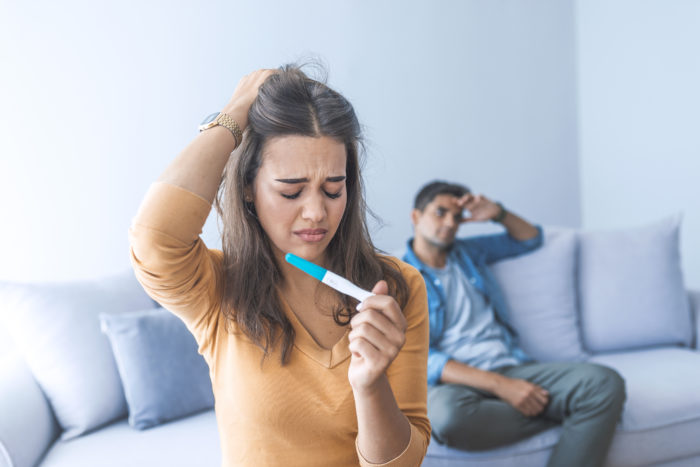
Xenoestrogens and Fertility Complications
In women, exposure to xenoestrogens can predispose us to estrogen dominant related health conditions.
Conditions like PCOS, Endometriosis, and Fibroids are all related to having an imbalance of sex hormones, like high estrogen levels.
And if you suffer from these conditions, it can also mean difficulty becoming pregnant or carrying a baby to full term.
Exposure to xenoestrogens is certainly not the sole cause of these fertility related health issues. However, constant exposure to these endocrine-disrupting compounds, like in your daily skincare routine, can certainly exacerbate these conditions.
And once you do become pregnant, xenoestrogen exposure can still be harmful.
In mice, exposure to xenoestrogens during pregnancy has been shown to affect the estrogen levels of the developing fetus.
And men are perhaps even more susceptible to the negative effects of xenoestrogens on their fertility than women are. One study showed that xenoestrogens were found in the semen of infertile men, but not in healthy controls.
The study authors concluded that xenoestrogens could be contributing factors to the deterioration of these men’s semen quality, resulting in their inability to conceive.
So, if you and your partner are having trouble getting pregnant, xenoestrogens could be playing a part. Switching to safer skincare options is a quick and easy way to reduce your exposure to these endocrine-disrupting compounds.
The good news is xenoestrogens don’t hang around in your body forever. So once you eliminate the source, these toxins will pose less of a threat to your health.
Who Should Be Most Careful to Avoid Xenoestrogens
Xenoestrogen exposure is not good for anyone. And we should all take steps to avoid unnecessary exposure to these chemicals where we can.
There are a few populations where extra caution to avoid exposure should be taken.
You should be extra careful to avoid xenoestrogens if you are:
- Pregnant
- Trying to conceive (both men and women)
- Already experiencing any hormonal imbalances
- Suffering from PCOS, or Post Birth Control Syndrome
- Recovering from any hormone-sensitive cancer like Breast Cancer
If you fall into one of these categories, it’s important to do everything you can to take care of your hormone health. And being cautious not to introduce external factors that could throw off that delicate hormone balance is even more important.
Avoiding all sources of xenoestrogens in our day-to-day lives is almost impossible.
Removing them from areas that you do have control over, like your skincare products, is a great way to reduce your exposure.
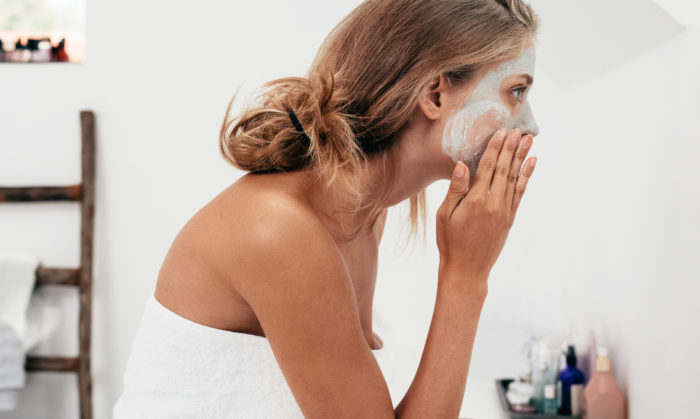
Absorption of Xenoestrogens from Skincare Products
All sources of xenoestrogen exposure are potentially harmful to our health.
But the most readily absorbed sources of this endocrine-disrupting chemical are actually our skincare products.
When you consume chemicals, they’re first filtered through the liver before they make their way into the bloodstream.
The liver’s ability to filter out toxins and chemicals is rather amazing. A majority of those potentially harmful chemicals will never make it past the liver’s rigorous screening.
However, when you use skincare products that contain xenoestrogens, those chemicals enter your bloodstream through absorption. They completely bypass the liver, never giving this organ the chance to filter and remove them from the body.
Our skin is the body’s largest organ, making what we put on our skin potentially more important for our health than what we eat.
It’s even been shown that, on average, 60% of the chemicals in cosmetics end up in our bloodstream. And the absorption rate of the skin on our face is five to ten times higher than elsewhere on our bodies.
Which means all the times we’ve used that conventional face toner, undereye concealer, or foundation, we’ve been allowing our skin to absorb these endocrine-disrupting chemicals.
Don’t worry. Switching to safer skincare is possible, and isn’t as daunting as it may seem.
Plus, xenoestrogens don’t accumulate in the body. So once you stop using toxic skincare products, these chemicals leave your system fairly quickly.
If you’re looking for proven, safer skincare options, give Beautycounter a try!
Skincare Ingredients that Contain Xenoestrogens
Now that we know why we should be avoiding xenoestrogens in our skincare products, let’s take a look at some of the ingredients we should watch out for.
Xenoestrogens can hide in so many places on skincare labels. And the list of ingredients that contain these endocrine-disruptors is quite lengthy.
I’m going to do a deep-dive into the top three sources of xenoestrogens here.
Would you like to save this post?
Your email address is 100% safe and will never be sent spam.
If you’re interested in learning more, Beautycounter has an extensive list of ALL of the chemicals that are known to be hazardous to your health. Even beyond disrupting your endocrine system.
(PS: These are all chemicals that Beautycounter has promised to never use in their products.)
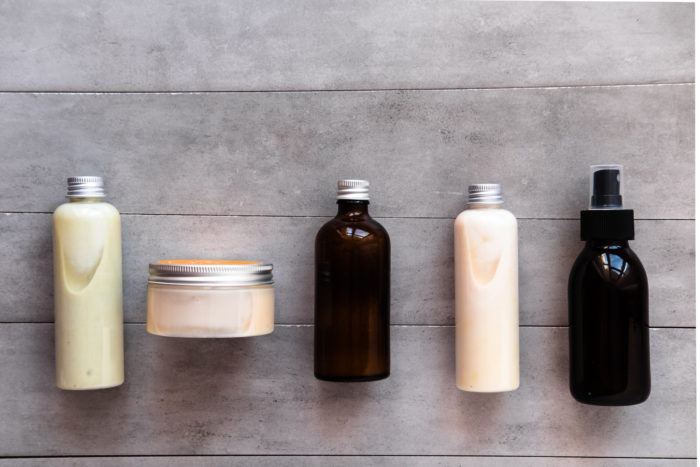
Xenoestrogens in Skincare: Phthalates
Phthalates are plasticizers, which are used in skincare to moisturize and soften the skin.
So as you can imagine, these xenoestrogens are incredibly common in conventional products.
Phthalates have been linked to everything from general endocrine disruption, to developmental and reproductive toxicity and cancer.
Exposure to phthalates during pregnancy has been shown in animals to delay sexual development of male babies. Even though this study was done on rats, exposure levels that resulted in symptoms were the same as levels found in humans.
It’s also common to find phthalates in breast milk. This makes transferring these chemicals to a nursing baby very likely. And in one study, early life exposure to these chemicals actually decreased testosterone levels in breast-fed males.
And phthalate exposure isn’t just something women need to watch out for. Men are perhaps even more susceptible to the negative effects of this xenoestrogen due to its estrogenic effects. Men are supposed to have low levels of estrogen, and any increase can cause health problems.
One study showed that men who used conventional cologne or aftershave 48 hours prior to sample collection had increased levels of phthalates in their urine compared to men who didn’t use these products.
Again, I hope that this information helps to inform you rather than scare you. And most of these studies were done on animals, not on humans. So in many cases we’re making assumptions about what might happen in humans.
However, the correlation to human exposure levels shows that we should be cautious using phthalates. Especially if we’re pregnant or planning to become pregnant. (This goes for the men in our lives too!)
Looking for Phthalates on Labels
The following skincare ingredients are sources of Phthalates.
- Phthalate
- DEP
- DBP
- DEHP
Perhaps the worst part about Phthalates in your skincare? Many times when these chemicals were detected in products, they weren’t listed on the ingredient label!
One of the reasons for this is that Phthalates often times hide in the ingredient list under “fragrance.” Companies are able to vaguely label a group of ingredients as simply “fragrance” in order to protect trade-secret ingredients.
That leaves consumers in the dark when it comes to really knowing what’s in our skincare products.
This is why Beautycounter NEVER lists ingredients as “fragrance,” and NEVER uses chemicals known to cause harm in their products.
They’re all about 100% transparency with their skincare. (Which is something I can totally get on board with!)
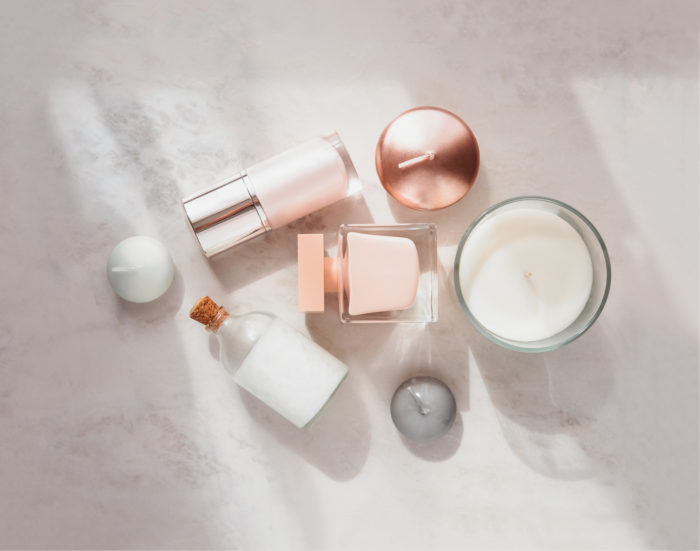
Xenoestrogens in Skincare: Parabens
Parabens show up in personal care products because they are antimicrobial agents and preservatives. And like Phthalates, this xenoestrogen is extremely common in skincare products, shampoos, conditioners, and scrubs.
Parabens have been shown to readily absorb through the skin, so their use in skincare products offers an easy route to our bloodstream.
That’s why it’s not hard to believe these chemicals have shown up in postpartum women’s breast milk and urine just 24 hours after use of conventional skincare products.
Parabens also impact our health beyond endocrine disruption. An increase in UV light-induced damage of skin cells and skin irritation have been connected to topical Paraben use.
Looking for Parabens on Labels
The following skincare ingredients are sources of Parabens.
- Ethylparaben
- Butylparaben
- Methylparaben
- And other ingredients ending in “-paraben”
Looking for a “paraben-free” label is the easiest way to avoid exposure to these xenoestrogens in your skincare products. Because just like with Phthalates, Parabens can hide in ingredients like “fragrance.”
If you don’t have time to scour ingredient labels, you can trust Beautycounter to never use Parabens in their products!
Xenoestrogens in Skincare: Triclosan
Triclosan is a strong antimicrobial agent that was originally developed for use in surgical scrubs.
How this chemical has found its way into so many non-federally regulated skincare products is beyond me! In fact, it’s so prevalent in our society that 75% of Americans have detectable levels of triclosan in their urine.
Triclosan has been proven to affect the production and utilization of thyroid hormone in animals. So much so, tadpoles exposed to this chemical prematurely turned into frogs!
Beyond being an endocrine disruptor, studies show that triclosan actually affects the health of our gut microbiome. In turn, this increases our sensitivity to certain allergens.
And, not surprisingly, triclosan has also shown up in the milk of breastfeeding mothers due to exposure from personal care products. And while Triclosan was finally banned from use in antibacterial hand soap in 2016, it is still prevalent in many skincare products. So you still need to look to avoid it.
Looking for Triclosan on Labels
The following skincare ingredients are sources of Triclosan.
- Triclosan
- Triclocarban
Your best bet for avoiding this xenoestrogen is to not purchase products marketed as “germ-killing,” “odor-fighting,” or “anti-bacterial.”
And in reality, good old soap is just as effective at killing germs. Plus it won’t kill healthy bacteria on the skin’s surface. So why anyone needs soap with triclosan in it at this point is beyond me!
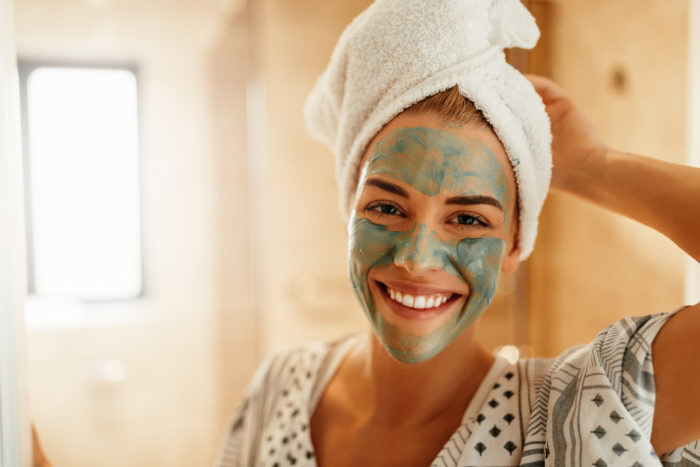
My favorite Safer Skincare Option: Beautycounter
When it comes to avoiding xenoestrogens in skincare products, finding a brand you can trust is key.
Ingredient labels can be intentionally misleading. And these endocrine-disruptors can be difficult to pick out among a laundry list of chemical names.
This is why I can wholeheartedly recommend one company when it comes to providing unquestionably consistent safer skincare options. Beautycounter.
Beautycounter is serious about their commitment to providing safe skincare products.
They’ve prohibited the use of over 1,500 chemicals in their products. This are all chemicals that can pose potential health risks to consumers.
Not only does Beautycounter ban thousands of ingredients that are in conventional skincare products, they also rigorously screen their products for heavy metals and other toxins.
I’m a huge fan of Beautycounter and their mission to get safer skincare into the hands of everyone.
And to be honest, I also have high standards when it comes to the performance of my skincare products. And I wouldn’t be nearly as excited about Beautycounter if they didn’t perform to those standards.
These products are equivalent if not better than the conventional ones I’ve used previously. Plus I have the peace of mind that there are no xenoestrogens in any of my skincare products or makeup when I get it from Beautycounter!
My Beautycounter Recommendations
Here are a few of my Beautycounter favorites that I use as a part of my daily skincare routine.
I’m a minimalist when it comes to my skincare routine. So anytime I find a product that can multitask as this Cleansing Balm can, I’m immediately a huge fan.
I use this product for everything from removing my makeup to a replenishing overnight mask. It’s definitely a staple in my skincare routine.
If you’re anything like me you probably tend to be a little tough on your skin.
From my sweaty training sessions to sun exposure, or forgetting to moisturize and exfoliate, my skin can sometimes get a little dull. That’s where the Overnight Resurfacing Peel comes in.
This product uses natural acids (not toxic chemicals found in traditional peels) to leave your skin feeling smooth, minimizing the appearance of pores, and giving you that coveted glow. I love it for preventing the clogged pores that lead to acne.
This is my acne-prone clients’ go-to soap in their skincare routine. It’s a soap for oily and acne prone skin that doesn’t dry you out… what more could a girl ask for?
With the combination of charcoal for absorbing impurities and coconut oil for hydration, there’s not much that this bar can’t do.
Pro Tip: Use a warm knife to slice this bar into smaller pieces so that you can make it last longer. (See this post.)
And if you’re looking for other Beautycounter products to use for treating acne, check out my favorites in this article.
Putting oil on already oily skin may seem counterintuitive. Yet this fast absorbing, natural citrus scented Brightening Facial Oil leaves your skin feeling silky smooth.
And after a few minutes, I can’t even tell I had just put oil on my skin. It really does absorb that well.
It’s definitely one of my all-time favorite Beautycounter products. And I love that it contains anti-oxidants like vitamin C that can help protect my skin against premature aging.
Beautycounter recently launched a men’s line which I am so stoked about. As mentioned in this article, these xenoestrogens might be even more harmful for the men in our lives than they are for us women. We need to make sure our partners are keeping their hormones healthy too!
So when BC launched their men’s line, you know I ran out and bought my hubby #allthethings. I especially love the beard oil (Josh has grown out a pretty impressive beard this winter) and Josh appreciates the facial moisturizer. He’s a pretty low-maintenance guy so he only uses a few items, but I want them to be xenoestrogen free!
Click here if you want to browse all the products that Beautycounter has to offer.
And feel free to email me at hello@lauraschoenfeldrd.com if you want any more information about these products and how to pick the products that work best for you.
PS – I’m a Beautycounter consultant who has loved being a part of this movement. If you’re interested in becoming a Beautycounter consultant and helping to get safer skincare into the hands of more women, click here. I’m happy to chat with you about getting involved with this world-changing company!
This post may contain affiliate links. If you click on a link and make a purchase, I may receive a small commission.
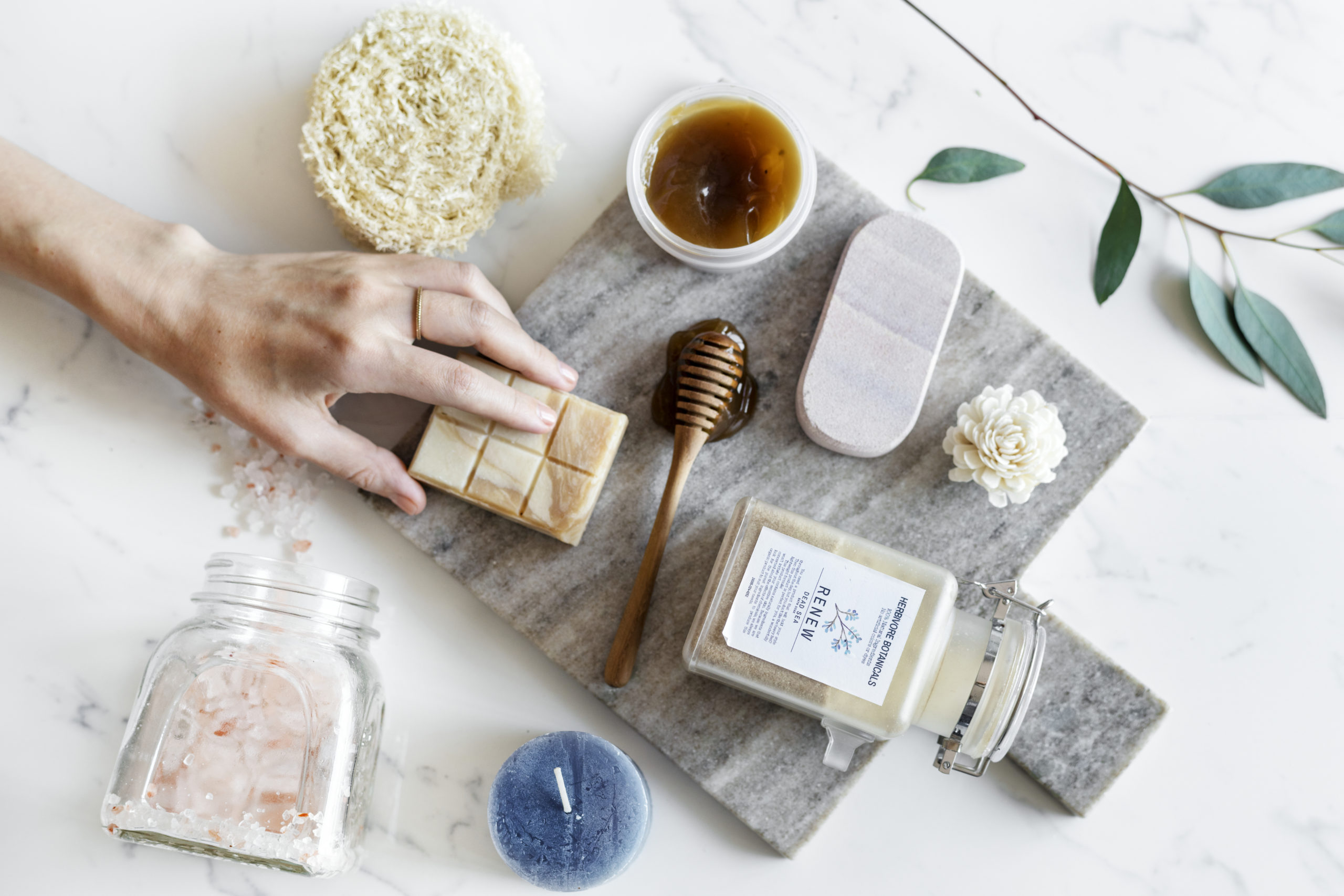
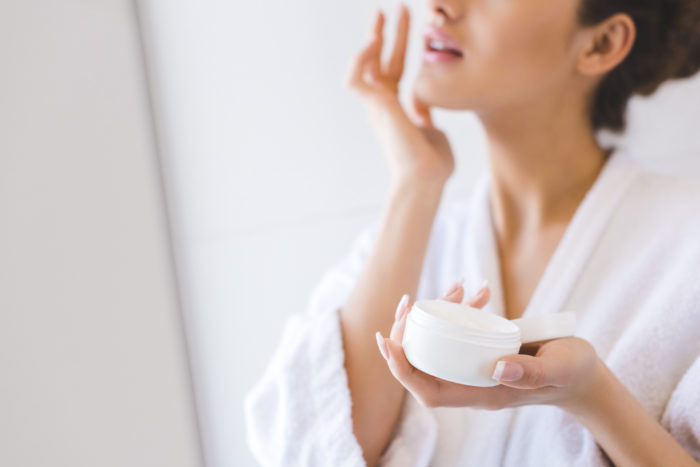
+ show Comments
- Hide Comments
add a comment